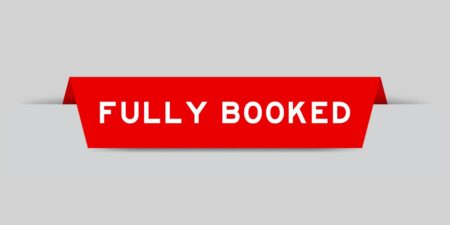Founder of PRNEWS.IO, an Ad-tech & PR platform for SMBs around the world.
In today’s attention economy, crafting a comprehensive PR strategy across a wide range of channels within a well-structured budget is crucial for enhancing your brand reputation, managing crises and fostering relationships with your stakeholders.
Below, I’d like to outline some basic steps and strategies to help you create a well-structured PR budget.
1. Assessing Your PR goals
To plan your PR budget effectively, make sure your strategy aligns with your business objectives and establish key performance indicators (KPIs) to monitor progress. Knowing your target audience is key to tailoring your PR strategy.
2. Allocating Resources
Armed with a clear set of objectives and a thorough understanding of your target customers, it’s time to break down your PR budget. This translates to allocating your resources based on the PR activities that are most relevant to your customer segments. Let’s take a look at the most popular categories.
Media Relations
Dedicate a part of your PR budget to build and maintain relationships with media professionals. Even though it may not always result in a clear ROI, media coverage services like press releases, media monitoring and press kit distribution are crucial for any comprehensive PR strategy.
Content Creation
Content creation is the backbone of digital marketing and PR activities. It covers everything from blogs and YouTube videos to Instagram and LinkedIn posts. According to research from Search Engine Lead, the majority of comms professionals allocate between 10% and 49% of their budgets towards this category.
Events
PR event planning involves showcasing a company, brand, product or service. Its goals are to promote brand recognition, attract new customers and increase sales. It’s crucial to have a clear understanding of what you’re promoting, who your target audience is and your budget.
Influencer Marketing
Influencer marketing should be an important part of modern PR strategy, where collaborating with key opinion leaders in your industry can effectively promote your brand and message. I recommend that you allot a portion of your PR budget for testing to make data-driven decisions on resource allocation and maximize your ROI.
3. Using Different PR Channels Effectively
After allocating your PR budget, the next step is to utilize the various channels available to you. Understanding the advantages and disadvantages of each is crucial for creating a successful PR strategy.
Traditional Media
This is a classic channel that includes billboards, TV and other traditional forms of media. I find it to be a reliable and credible source of information that can effectively increase awareness of your business.
However, it lacks direct communication with consumers, making it challenging to measure the success of your campaigns. Moreover, the high costs and need for an agency can make it difficult for businesses with tight budgets.
Digital Platforms
Digital PR, especially through storytelling and social listening, is one of the most cost-effective ways to interact directly with consumers and build your brand. Its real-time reports and accurate information enable businesses to make data-driven decisions, optimize their PR budget and maximize their ROI.
However, it requires businesses to keep up with trends, manage large amounts of information and deal promptly with negative publicity.
Social Media
Social media has become one of the most powerful PR tools, enabling brands to interact directly with customers and get real-time feedback. Despite its benefits, social media management can be time-consuming and challenging. Moreover, it increases the risk of negative publicity that can significantly damage a brand if not handled properly.
Paid Media
Paid media enables businesses to reach large, targeted audiences and boost their organic results. This includes social media ads and sponsored articles. It’s an excellent way to track relevant KPIs, increase brand awareness and optimize your PR budget.
However, customers can get tired of seeing ads, so to maintain viewer engagement, I find that it’s essential to make sure you are creating innovative and captivating content.
Owned Media
Owned media refers to content published on platforms that you own, such as newsletters or blogs. It’s a great way to have control over the entire content production process and maintain relationships with stakeholders. One of the downsides is that growing your own media can be time-consuming.
Overall, to effectively reach your target audiences, a good PR strategy should employ a multichannel marketing strategy using a wide variety of the above channels.
4. Measuring PR ROI
It’s important to establish consistent KPIs to measure the success of your PR efforts. These KPIs can include impressions, website traffic, domain ranking, social media engagement, lead generation, customer loyalty and brand awareness.
To make sure you leverage your tracking efforts, you should establish clear baselines for each of your KPIs, regularly monitor your performance and, most importantly, adjust your strategies based on the data collected.
5. Adapting To Changes And Challenges
Entrepreneurs need to be flexible to maximize their ROI from PR activities. To handle PR crises and market shifts, businesses should set aside a portion of their budget for unexpected circumstances and create contingency plans. To adapt the PR budget during a crisis, negotiate with partners and include key stakeholders in the decision-making process.
Case Studies And Best Practices
To illustrate the importance of diversifying your PR budget across multiple categories, check out one of Slack’s most famous campaigns, Dear Microsoft. By spreading their PR budget across different channels, Slack was able to gain media attention and leverage the impact of their paid media investment to maximize the ROI of their campaign.
Similarly, Womply, with a limited budget, focused on original content and press releases to achieve significant media value and backlinks. This goal-based budgeting strategy brought the startup $305,000 in media value, 161 website backlinks and Forbes coverage.
To create a successful PR budget, align theoretical ideas with real-world applications and always keep your objectives in mind.
Conclusion
Regardless of the size of your company, it’s essential to establish a well-structured PR budget to succeed in your communication strategies. Allocate resources based on your position, objectives and available resources. Then, I recommend using the strategies outlined here to build a solid foundation for your PR activities, maximize your ROI and make the most of your budget.
Forbes Business Council is the foremost growth and networking organization for business owners and leaders. Do I qualify?
Read the full article here














